Climbing and going down the stairs of Angkor Wat is a scary experience. I honestly think I cannot do this place justice with my writeup and pictures. Angkor Wat simply has to be seen by your own naked eyes to be fully appreciated.
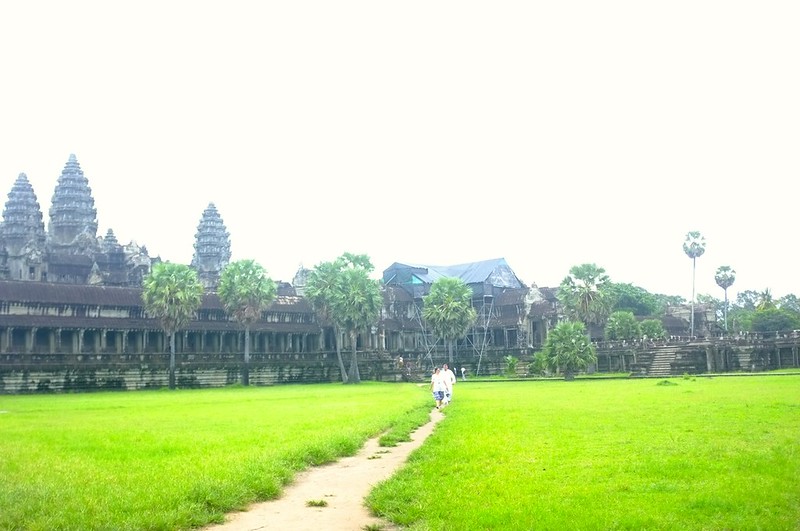
It was cloudy when I was here, and it looked like it could be raining anytime soon. It costs 20 USD for a full day entry, and they'll take a photo of you and print it out on the ticket so you can't cheat.
Local Khmers are free to enter as they wish.

It was cloudy when I was here, and it looked like it could be raining anytime soon. It costs 20 USD for a full day entry, and they'll take a photo of you and print it out on the ticket so you can't cheat.
Local Khmers are free to enter as they wish.

The perfect time of the day to photoshoot in open spaces like this is early in the morning between 8 AM - 9 AM, before the whole area is covered with direct sunlight. The sky should look azure blue if photos were taken during that time. Take it later than that then the sky would look white like what you can see here.
Sadly I arrived here by noon so the photos doesn't turn out great.
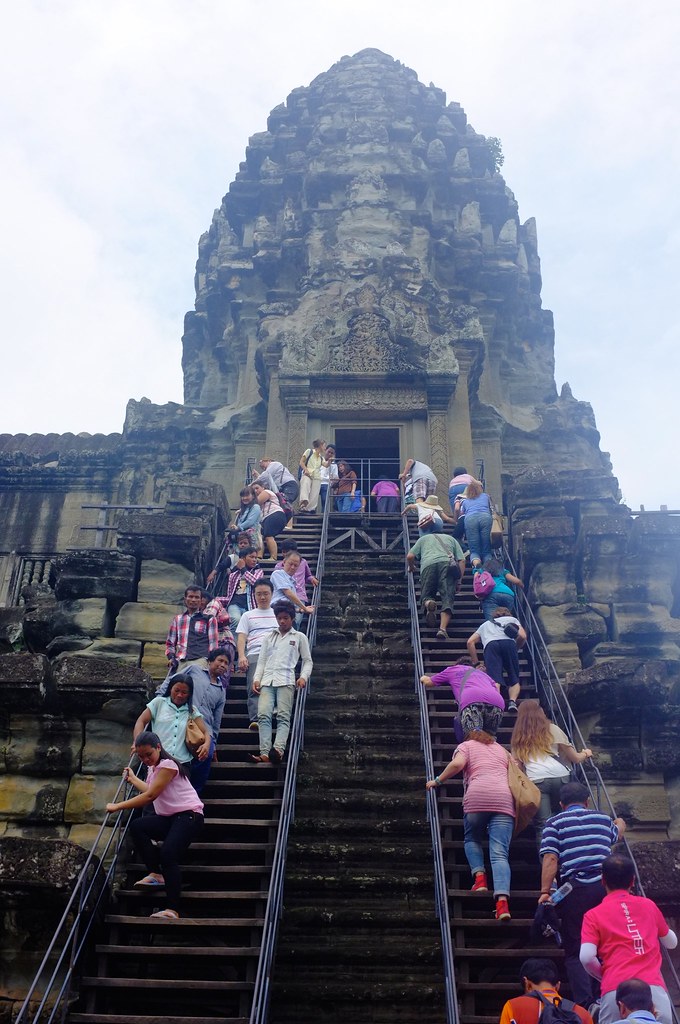
Angkor Wat was built more than a thousand years ago and it is amazing how well it has stood the test of time.

The building itself is considered to be the heart of Cambodia, so much that a picture of the temple itself is present on its national flag.

The night before, I was strolling around in the city of Siem Riep with Eryshad and a Khmer friend named Kariya. Kariya is a tour guide here so be sure to contact him for his service. I highly recommend it.
He took me to Siem Riep's famous night market.
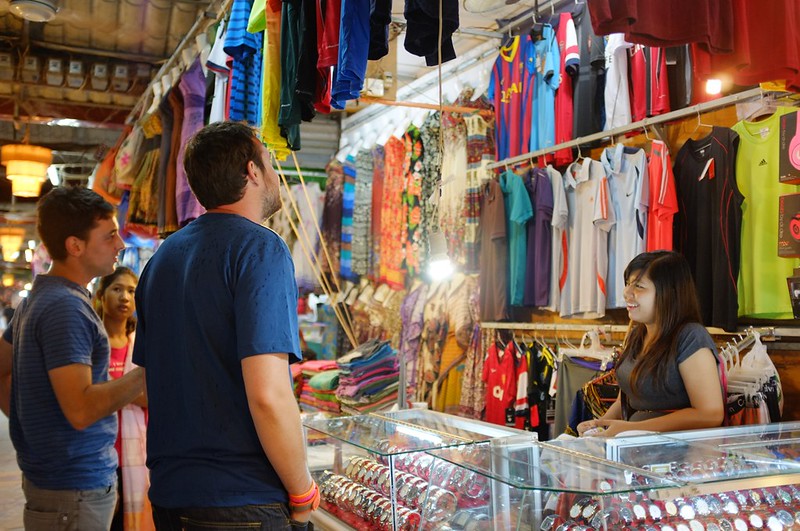
I did not shop much, but the items here are very cheap if you know how to bargain.
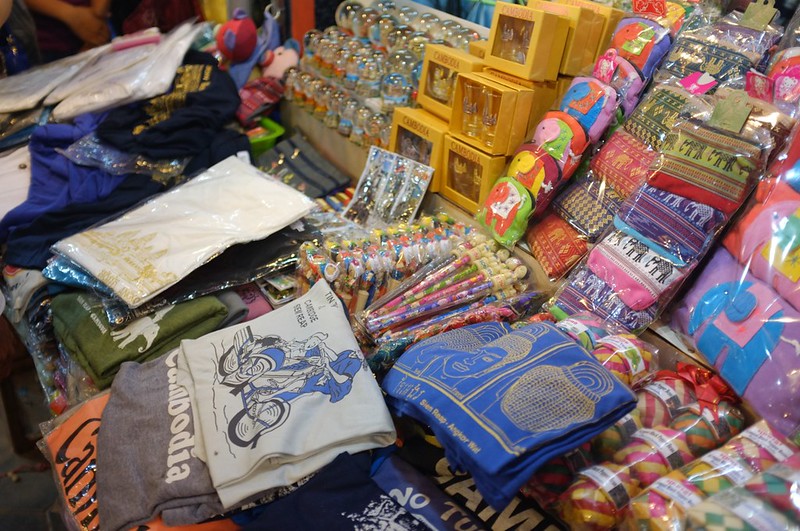
With the help of Ersyad I'm able to buy a couple of souvenirs at a very cheap price. So far I had only spent 80 USD on food, hotel, transport and now souvenirs.
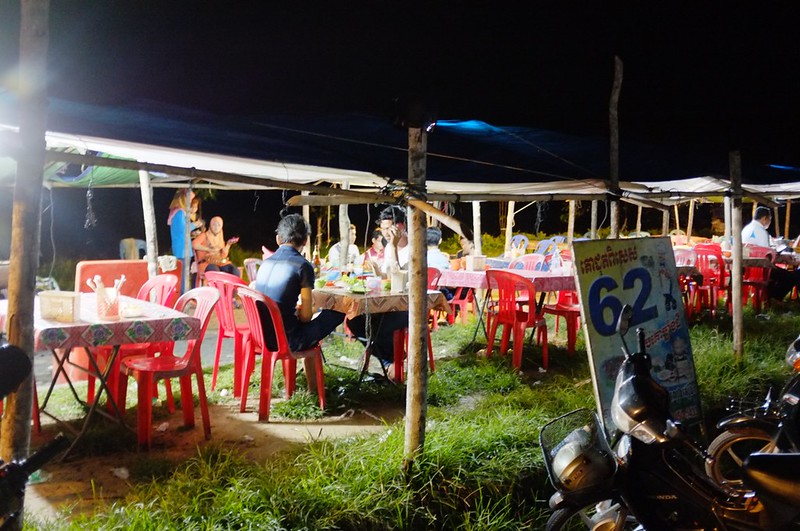
Then, we had a very nice meal somewhere along the river. On the way here, we passed by a market which was fully lighted by lamplights. It was bizarre because it looks like a very blackmarket like car boot sale.
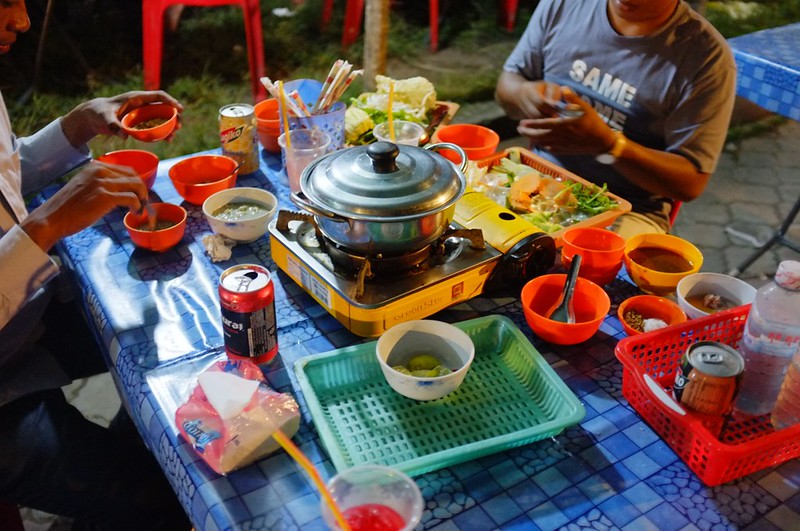
I had a nice steamboat-like meal. I also ordered grilled beef which was by far the greatest meat based food that I had ever eaten. No steak that I had before ever comes close to it. Sadly I didn' take any picture of it but it was so delicious.
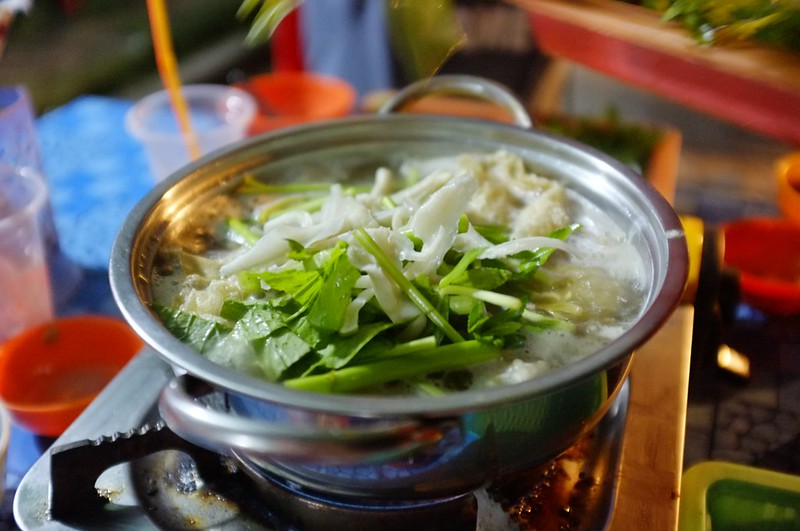
Kariya's Malay was very good. He talked about his upbringings, his family and his future plans. Turns out he comes from Tropeungchuk, the village that I had visited earlier.

Kariya said that this is one of his favourite spot to eat.
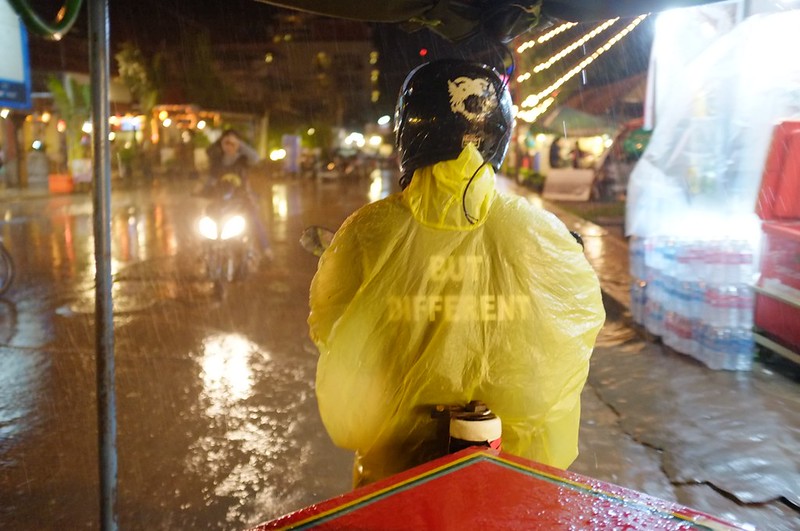
It was raining when we went home. We travelled by Kariya's tuk-tuk.
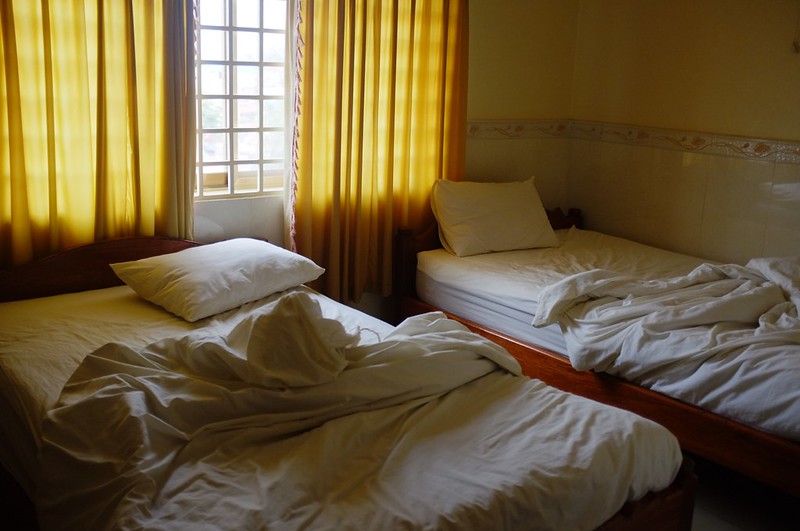
He booked this hotel for 12 dollars. 2 queen sized beds, free WiFi and hot shower included. No airconds but I don't think you'll need one.
Sleeping with the sound of rain pouring down is perfection.
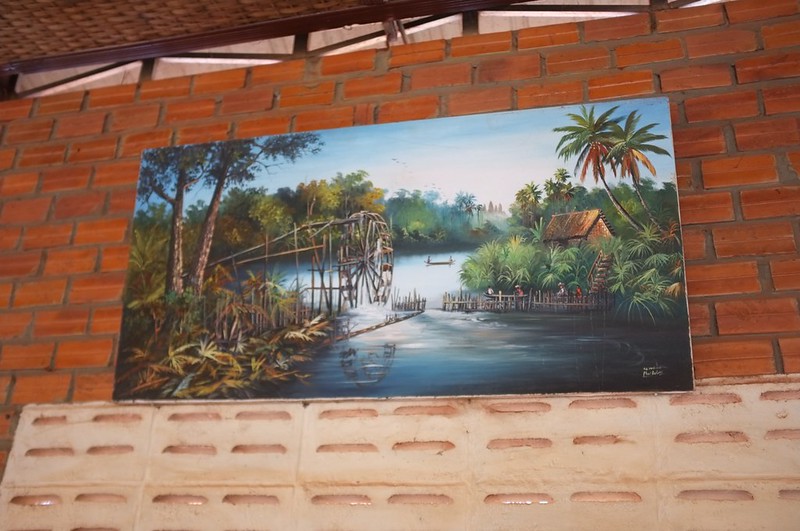
The next day, we had breakfast and lunch nearby.Well not exactly nearby since it took a 5 minute tuk-tuk ride to get there.
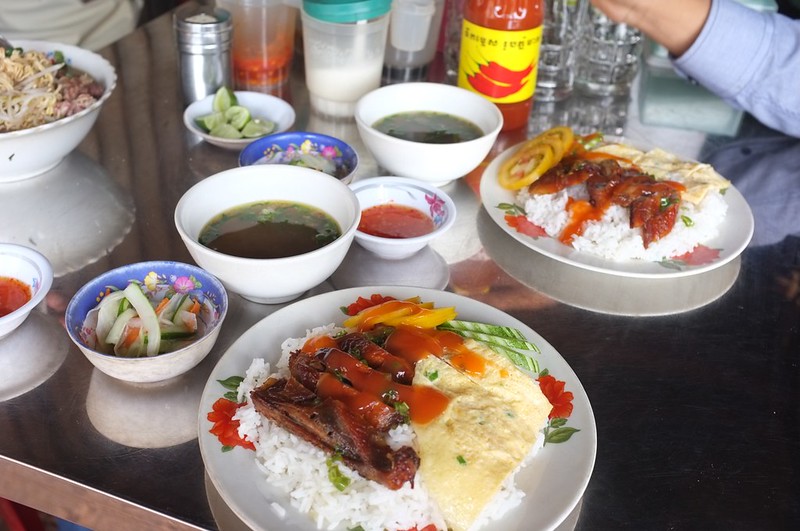
We had chicken rice for breakfast. The stall is situated just next to Siem Riep's mosque. Kariya's house is nearby as well.
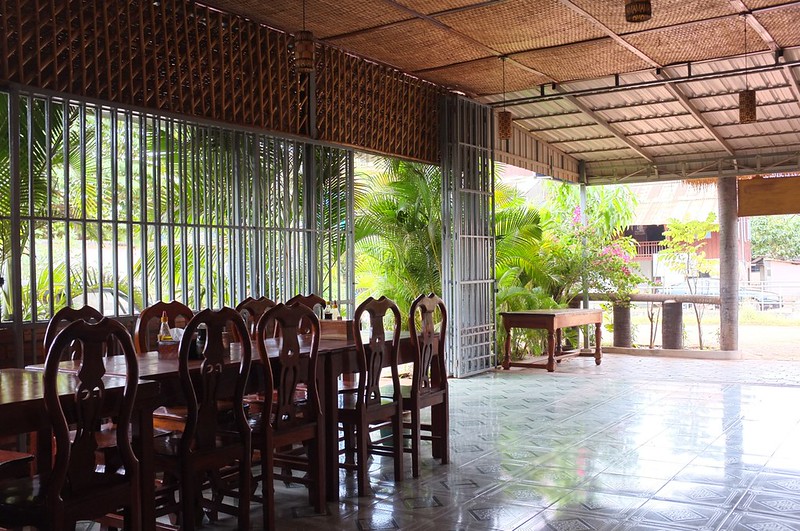
The for lunch a few hours after we visited this restaurant.
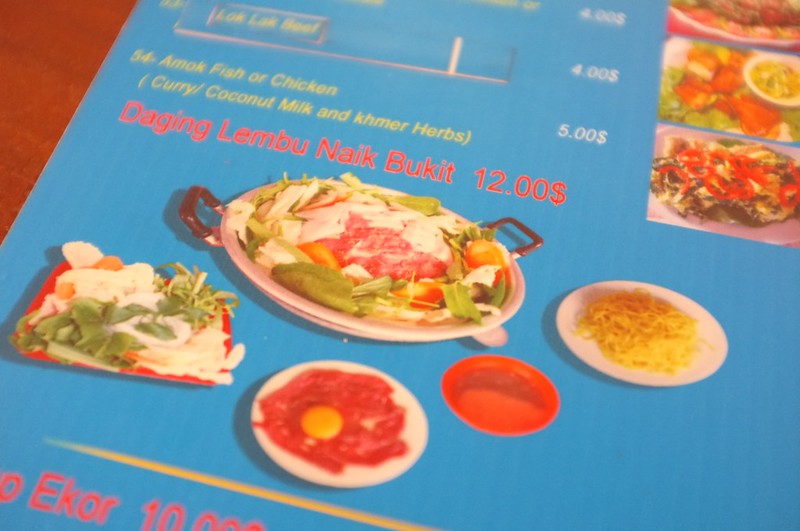
We chose this. It is expensive but I had loads of money left so why not.
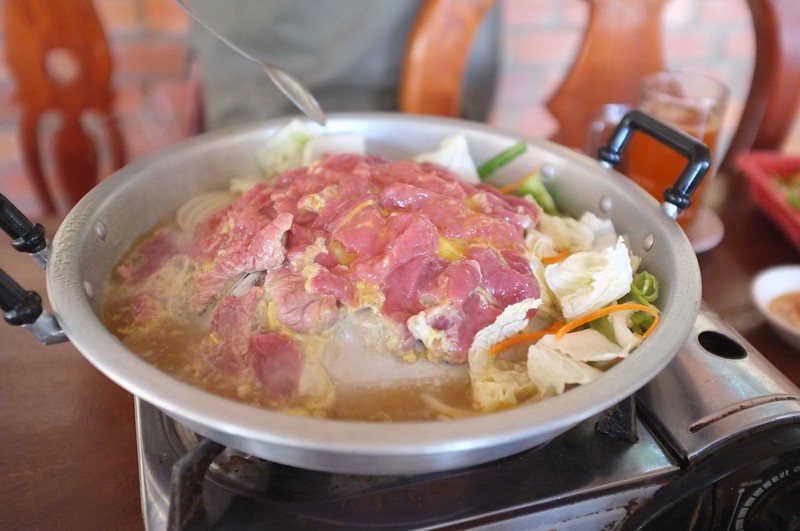
It was nice. I'd like to have this again if I was given the chance. The Khmers has a knack for these chankonabe like food. Chankonabe are meals that Japanese sumo wrestlers regularly eat to bulk up.
It tastes better than the very similar food that we had the day before. But nothing can touch the deliciousness of the grilled beef that I had yesterday - nothing.
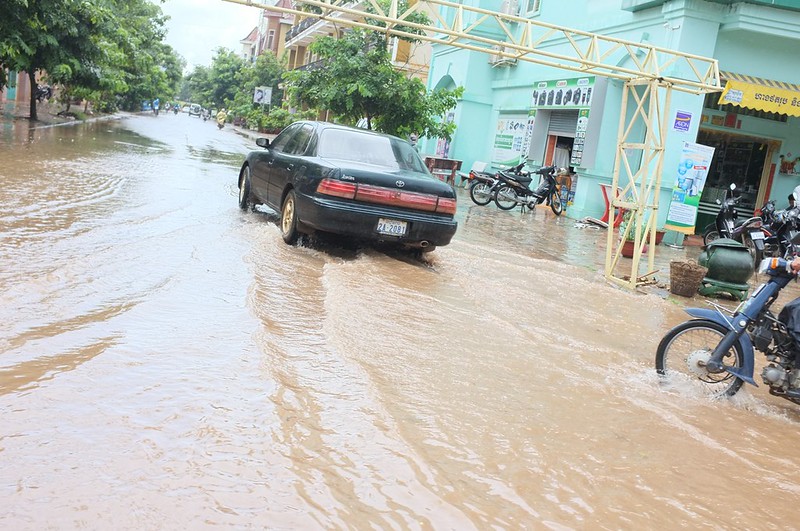
The rain from the day before shows its affect.
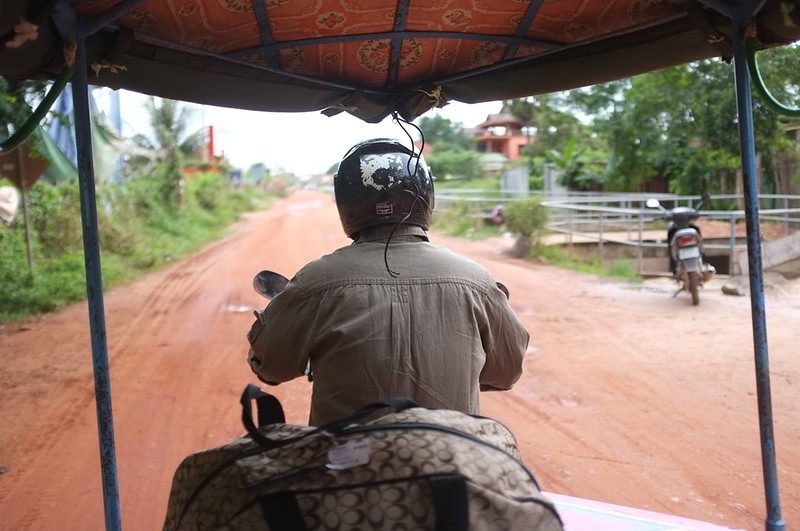
Off we go.
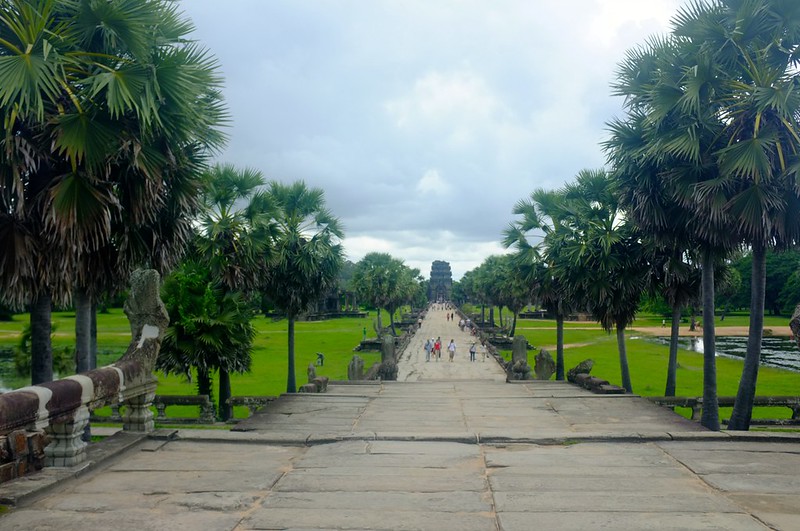
This is Angkor Wat. The place is not small. It is built upon a body of water and spans more than 500 acres. That is the size of more than 250 football fields packed side by side.
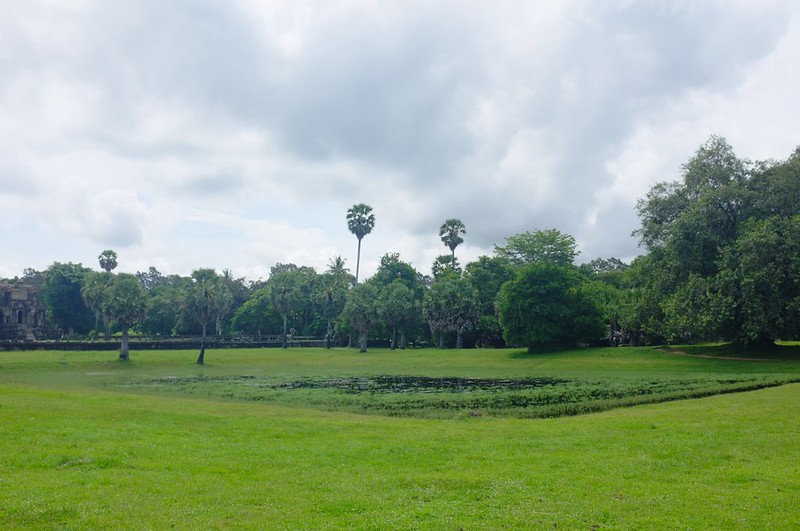
Basically the temple is floating, like a ship on a swamp. How the engineers back then manage to get around the intricacies of building such a complex structure is beyond my comprehension. Watching documentaries on how this was made really blew my mind.
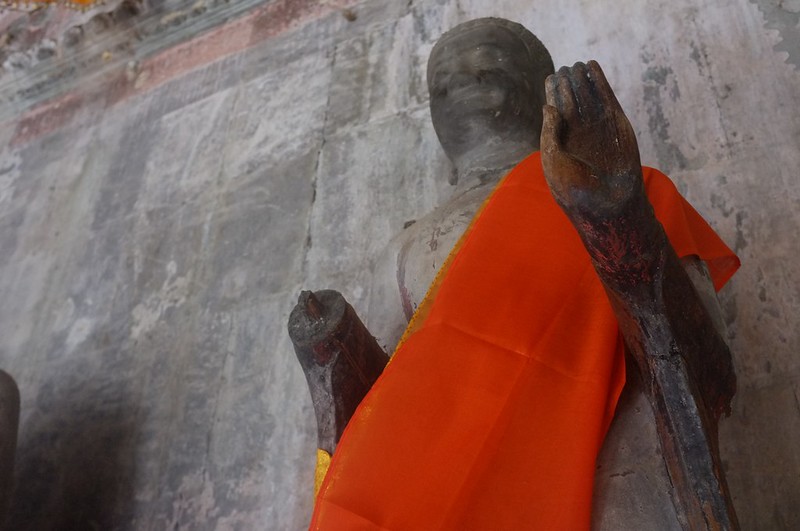
This building and the structures surrounding it is the brainchild of an autocratic king named Suryavarman the Second. People at that time considered him as a demigod. His rule spanned across present day Thailand to Laos and even to Peninsular Malaysia.
Now Suryavarman considers Vishnu to be his patron. Vishnu is of course the Hindu God of War and he built this temple as a symbol of dedication to Vishnu.
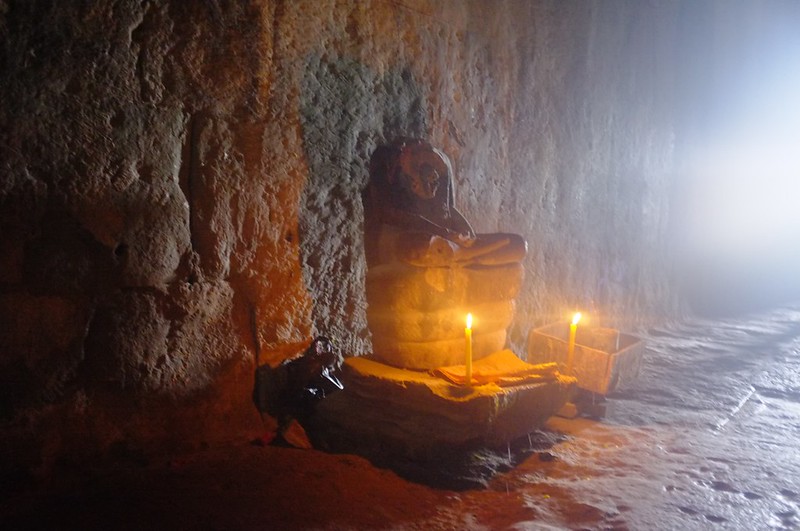
It was theorised that the temple was built in 30 years. A monumentally short time to built compared to other prestigious monuments in the world which took 100-200 years to complete. This temple is unique in that though originally built as a Hindu temple, it was converted to a Buddhist temple later on.
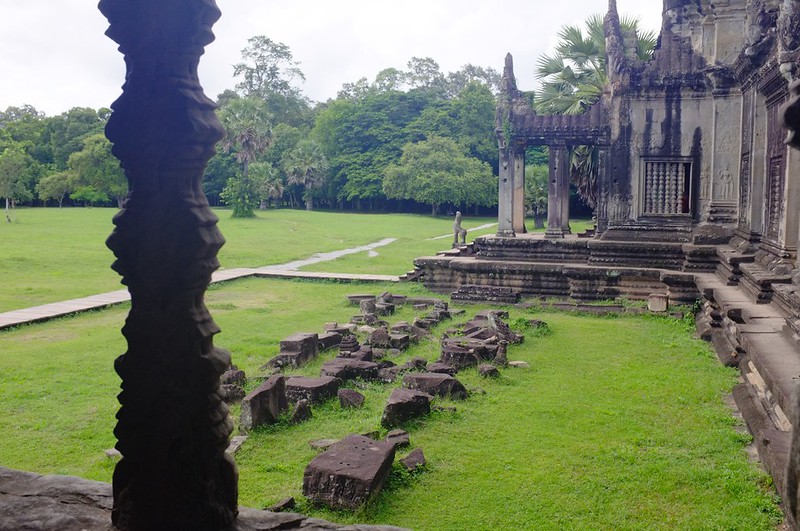
Sadly the king isn't able to see his full vision brought to life because he died before the temple was fully finished. There are many signs that lead to this belief such as unfinished carvings, unused stones and an overall lack of finish in some areas.
But still it is an engineering masterpiece.
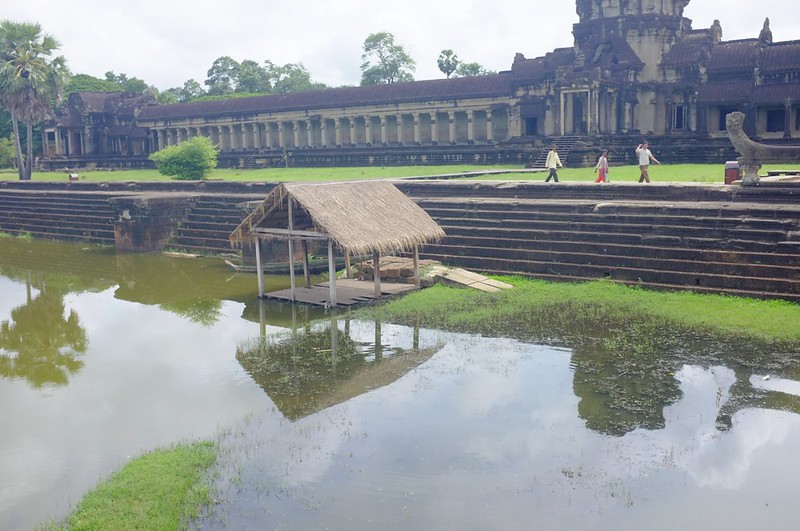
Other buildings at that time uses wood. But the king thinks that wood will perish overtime and also can be burned. So he chose to built the temple by something that can last an eternity - by stone.
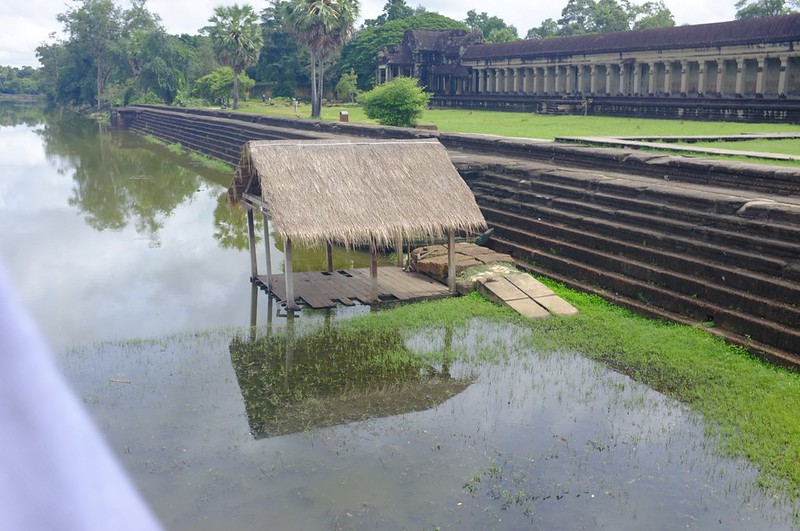
Tonle Sap River plays a huge role in transportation of materials, in addition to being the backbone of the local's fishing and rice paddy industry. It was as important to the locals back then as it is now. The abundance of water in the river and the complex irrigation system following it allows the local to harvest rice twice or even thrice a year.
Just as the Nile is to the Ancient Egyptians, the role of Tonle Sap plays the same to the Khmers.

The precision of all these stones are amazing. All in perfect alignment. What makes it the more impressive is that no water or cement are used. It is basically stone on top of a stone.

To create the arch in corridors - they use a building technique called corbelling. This is where blocks of stones are stacked upon each other to create an arch.
So impressive.
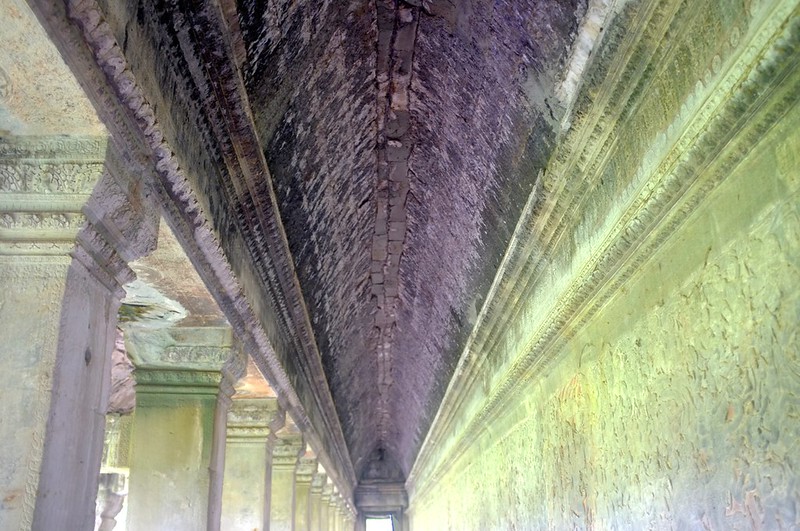
Again a sampe of the corbelling technique used and see how the stones are stacked on each other - like Lego.
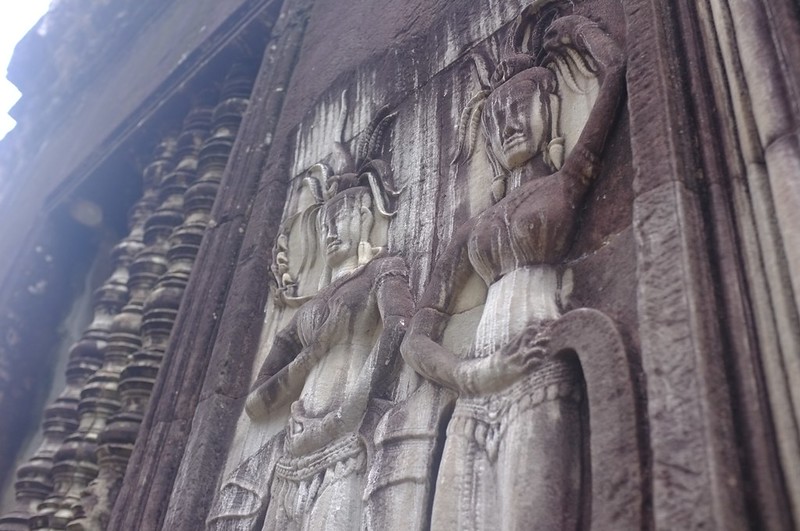
One of the many, many, many carvings in the temple. Whilst it still looks awe inspiring today, in the olden days, the carvings were covered with gold.
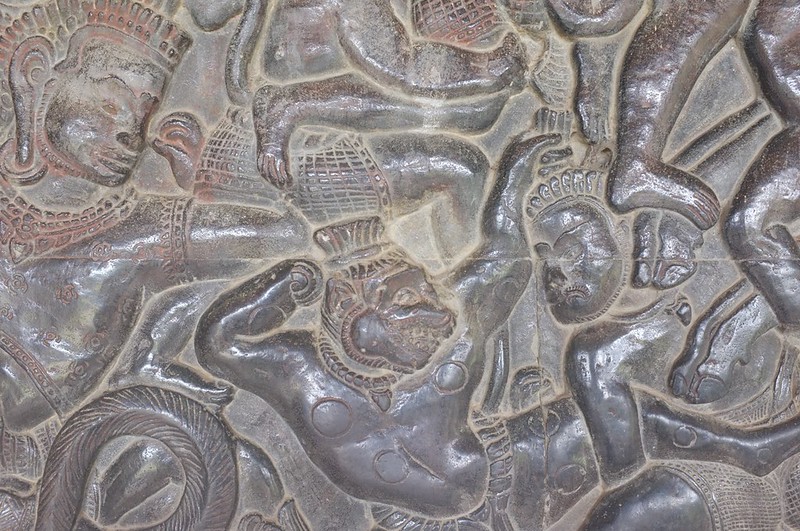
The carvings alone took more than 20 years out of the 30 years of construction time.
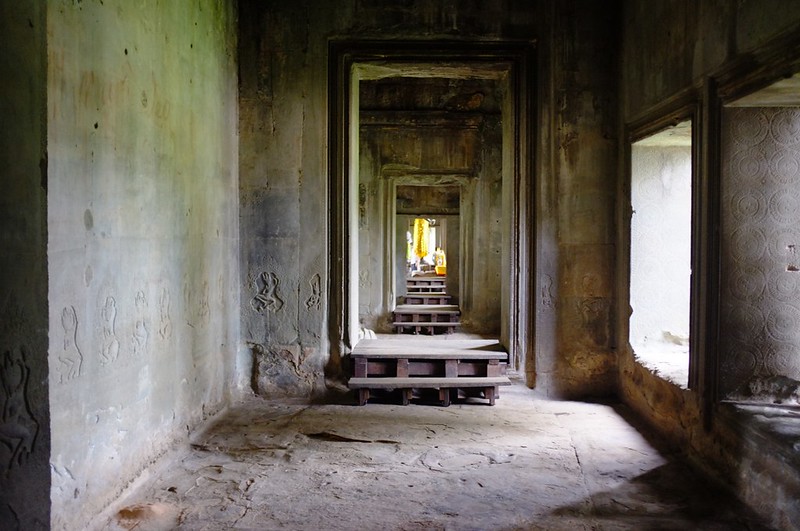
This place is one of those things where the more you read about it, the more impressive it seems to be.
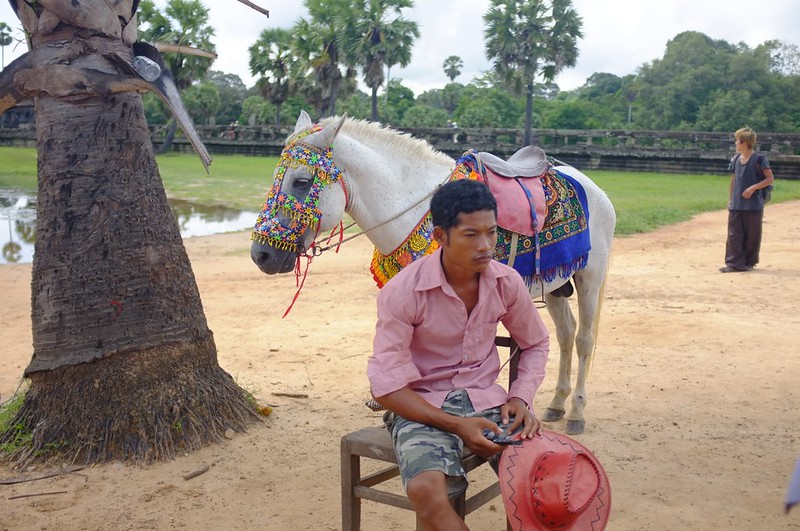
This place is a tourist hotbed. You can get a photo riding this horse for a couple of dollars. There are also local Khmer photographers here that will charge you a dollar for a photo.
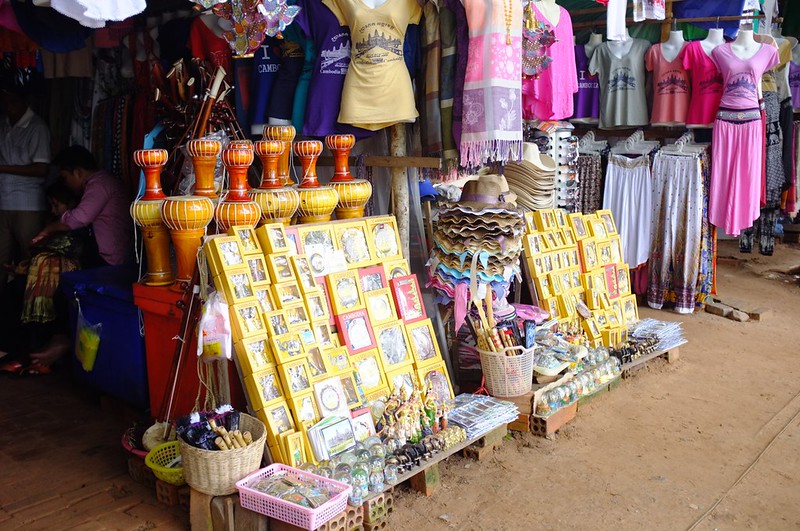
Souvenirs are also aplenty, but I was told that the price here is highly inflated.
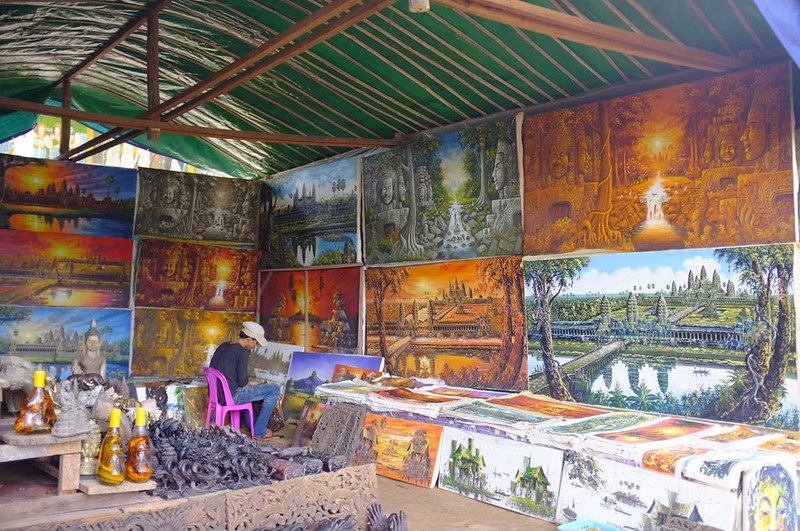
These paintings look nice.
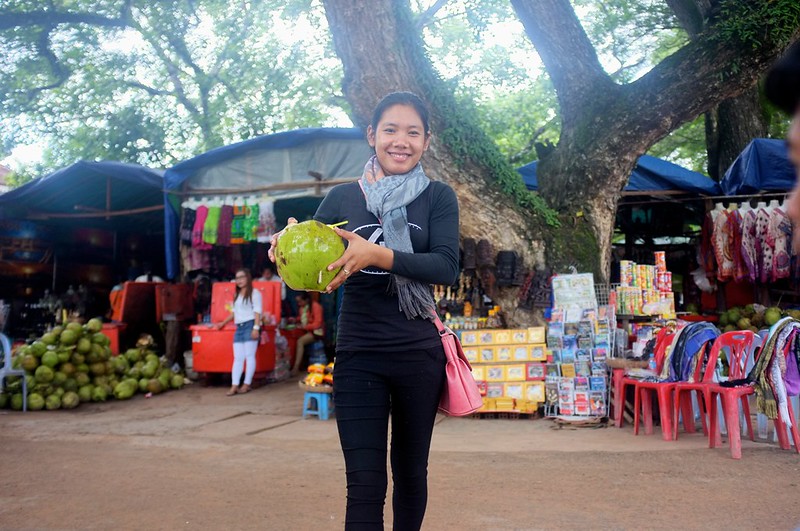
There were many chairs along the walkway where we can rest our feet. I ordered a coconut to quench my thirst.
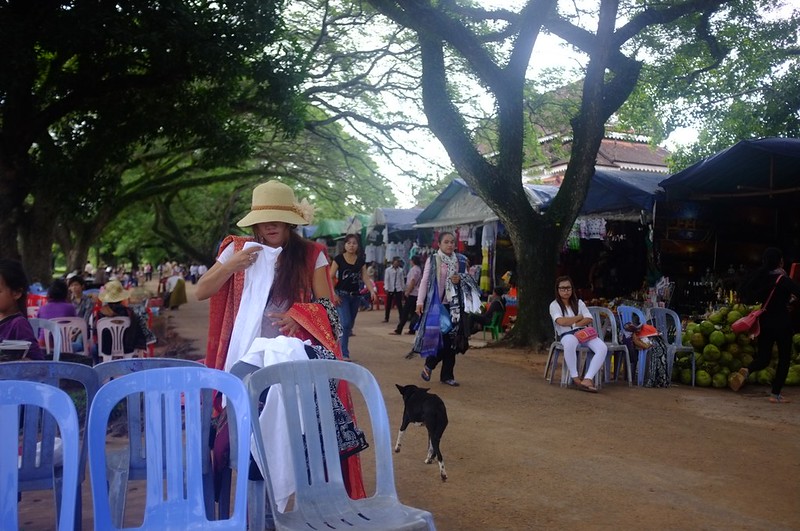
This lady is selling scarfs, travelling books amongs other things. I was annoyed with her constant flickering and the like, but looking back can't say that I blamed her - she's only doing her job after all.

I wonder what this old lady is selling.
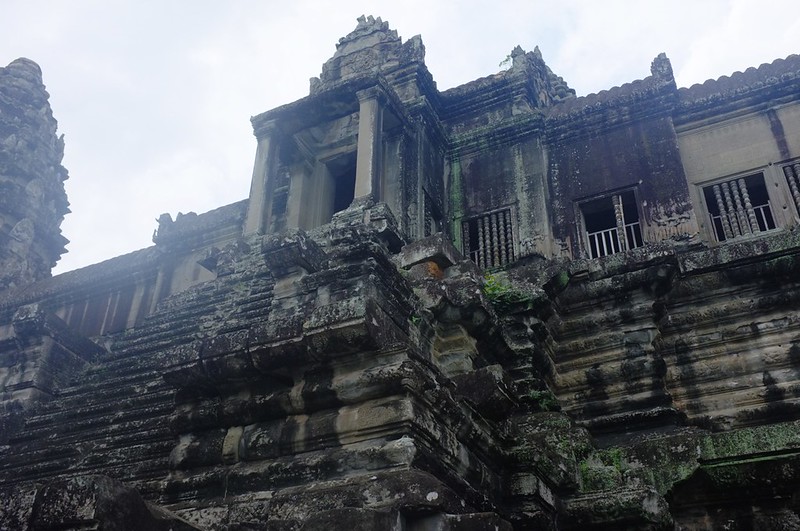
Moving on. Now this is one of five towers of Angkor Wat. You know, the whole design of Angkor Wat itself mirrors Mount Meru, a mountain holy to Hinduism. It is a mountain with a high peak with 4 other lower mountains around it.

The towers are once the most sacred part of the temple. It was only allowed to be entered by the king and the highest of priest. The stairs to the tower are on of the steepest in the world.
Thankfully they have built a more modern one on top of it.
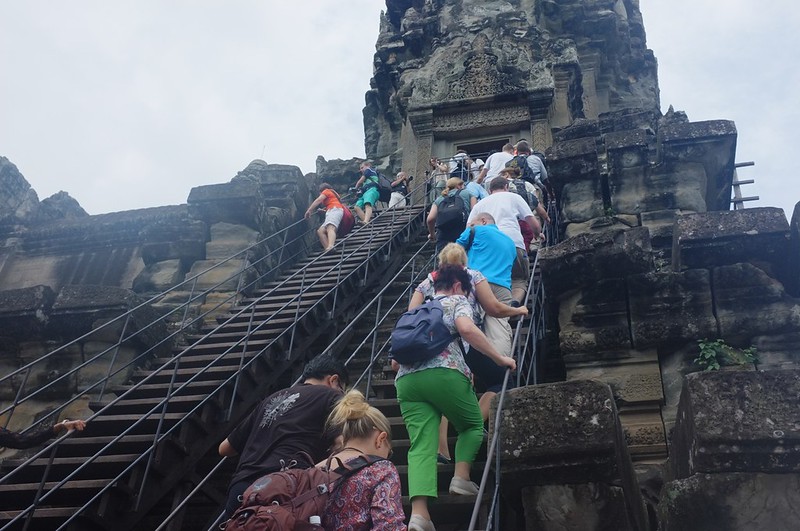
But still, the experience of climbing this is - let's just say the less said about it the better. Climbing down was even worse.

The logic in building these stairs the way it was are because they also acted as weightbeares to make sure the tower doesn't collapse.
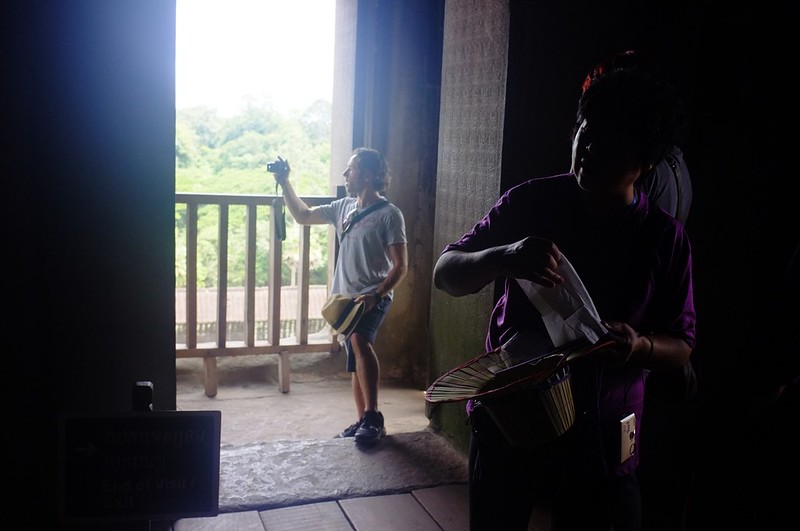
Stumbled upon another Fujifilm camera user here. He was using an XE-1. He looked at my Fuji X100 and gave a slight nod. I did the same.

The place as a whole was built using a stone called laterite. A stone temperable when becomes very hard when it hardens. But laterite is not beautiful, it hard holes and does not look majestic. It needs to be covered by real stones to carve and create a monolith.
So the Khmers covered these laterites with sandstones.

The roof also uses sandstones.
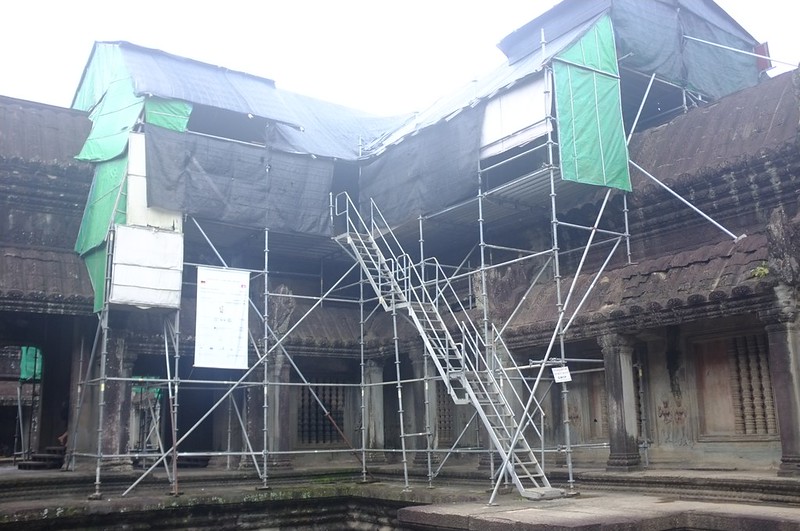
As you can see modern restorations are being done to preserve these structures.
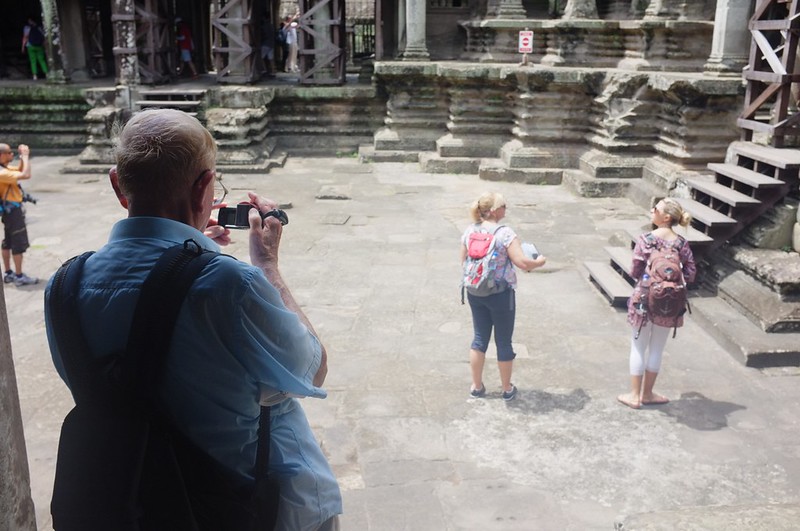
The Angkor Wat is estimated to be visited by 2 million visitors per yer. More than half of tourists that visited Siem Riep will come here.
So imagine how important this place is to Cambodia's tourism industry.
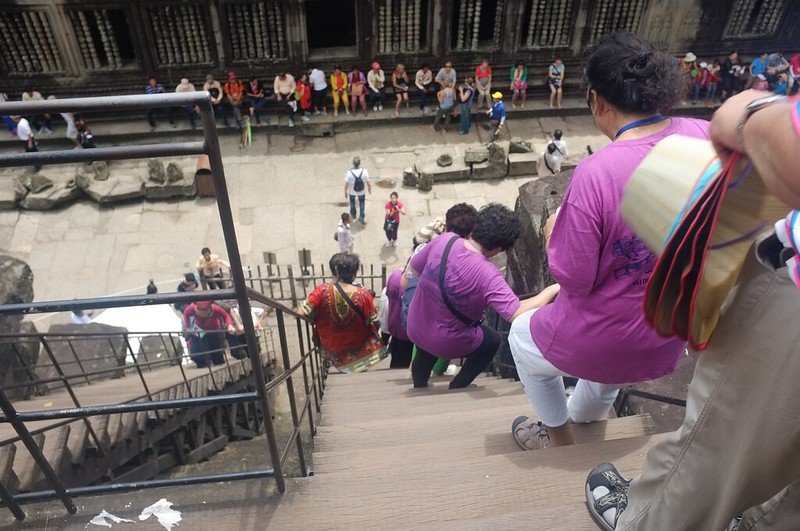
Man this takes me back.
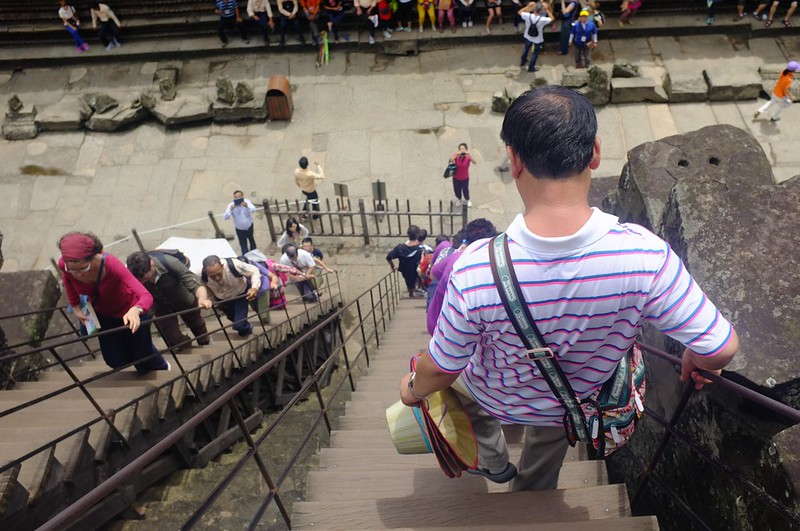
I can't imagine how people in the olden days climb these stairs much less go down these.
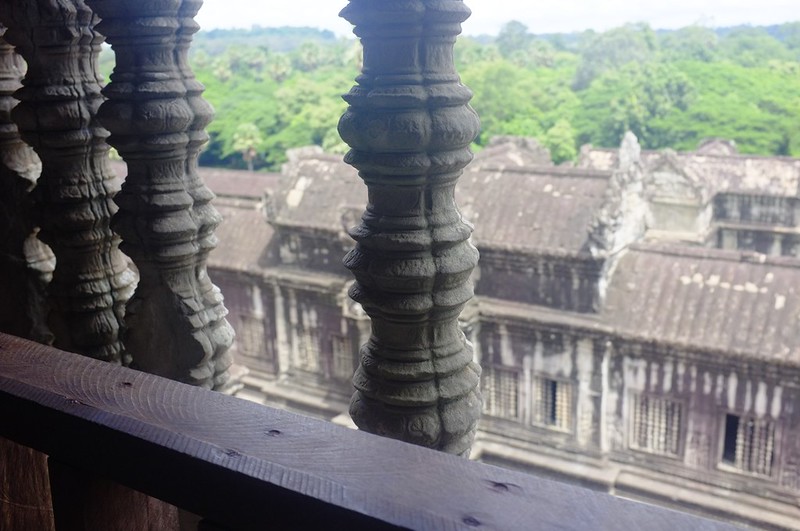
To be honest, I'm a little bit bummed that I didn't hire a personal tourist guide to tell me all of these details during my trip here. I imagined I would be more appreciative of this place if that were the case.
To know the stories behind the carvings of an event called The Churning of An Ocean of Milk, The Battle of Lanka and Kurukshetra on the spot must make the whole experience much more complete.

But I know that I'll visit this place again, I know so.
And with that, my Cambodia travelogue comes to an end. I'll be doing a travelogue on London next so be sure to check that out.
CAMBODIA TRAVELOGUE.
1. Phom Penh Part 1
2. Phnom Penh Part 2
3. Tropeungchuk, Kampong Thom - 40 years back to the past.
4. The Unfinished Mosque
5. Angkor Wat - The heart of Cambodia.
Inspirations, passions & motivations.
1. National Geographic's Ancient Megastructures documentary of Angkor Wat helps me alot in this entry. I recommend watching the documentary of you have the time.
2. My Ghibli binge continues. Do watch The Borrower Arrietty. The amount of imagination in this movie is staggering. The ending is especially heart warming where you realise that some things are just a fragment in our short life. I highly enjoyed From Up On Poppy Hill too. A really nice period piece which was enchanted by delicate renderings of a bygone but not entirely forgotten era in Japan. Both these movies were directed by Ghibli's younger generation talents.
3. I'm addicted to Pokemon X. The best Pokemon game so far although the post game content is very weak. But the online features more than make up for it. Bullet Punch Scizor is a beast. And Speed Boost Blaziken too.
4. Exam is coming up in 3 weeks and then the very last semester will start. I honestly can't believe it.
